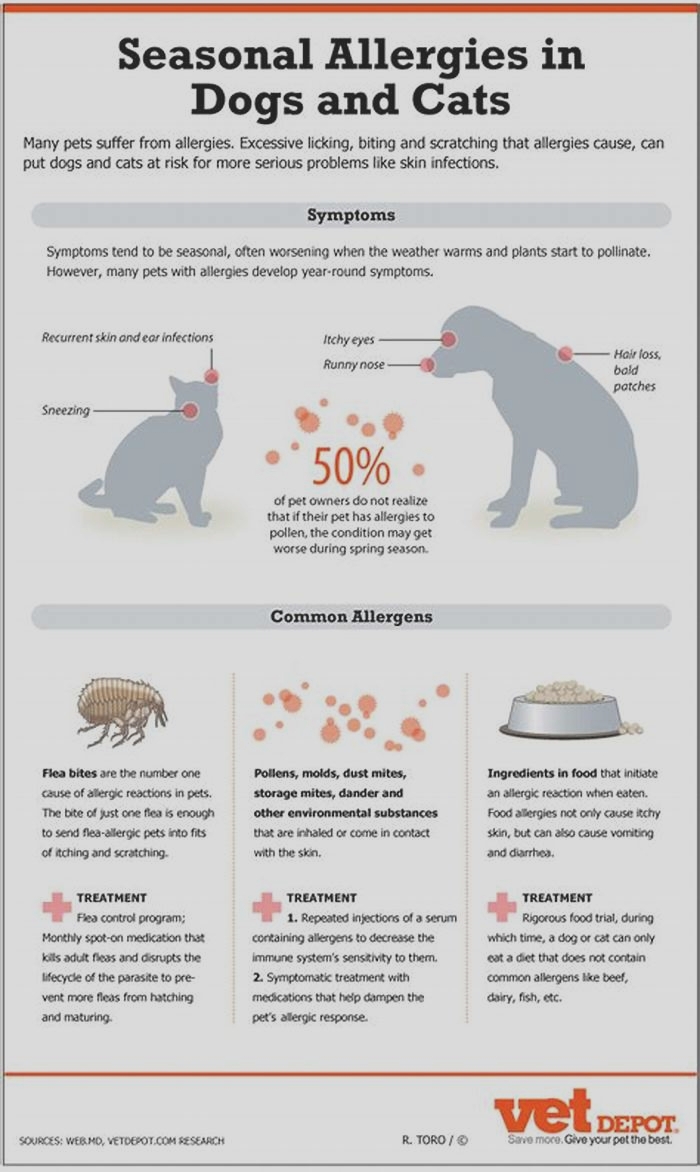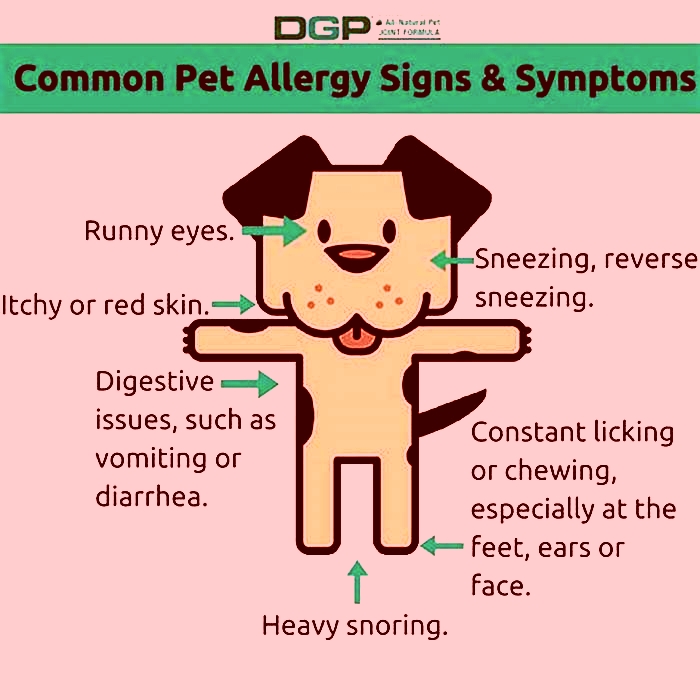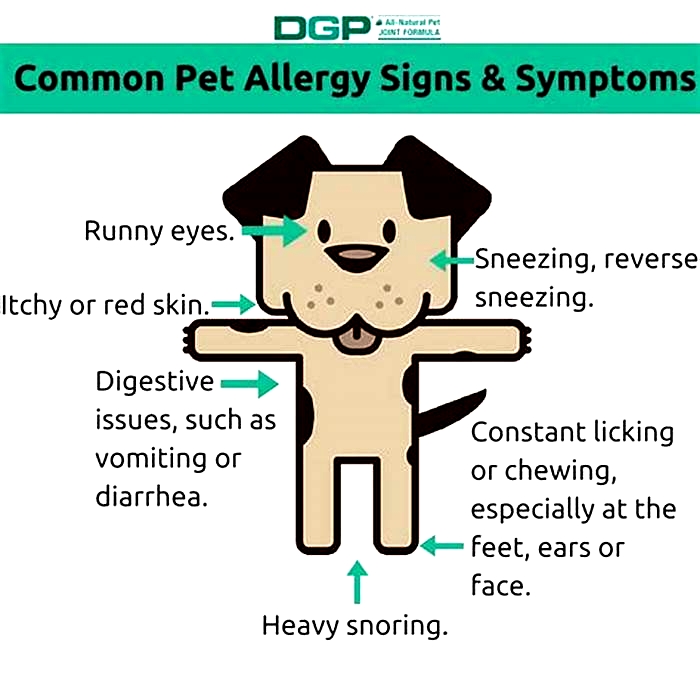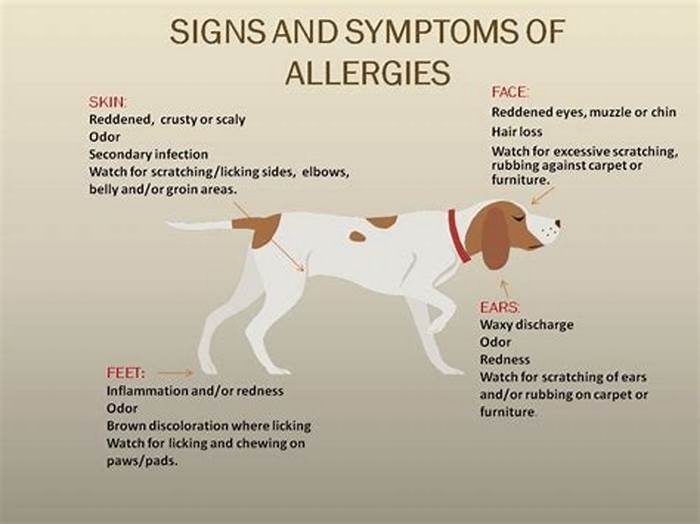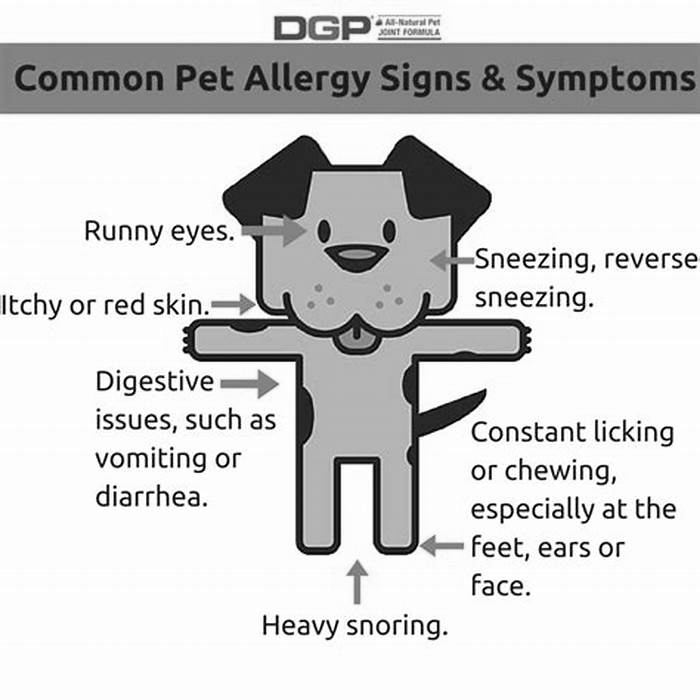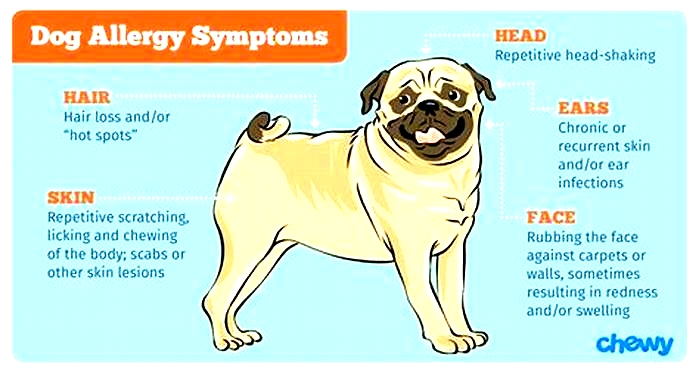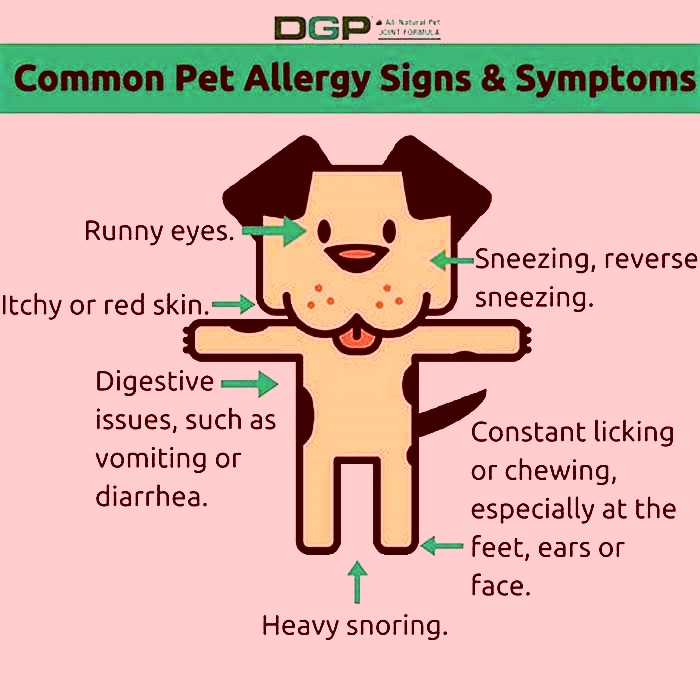Why am I allergic to dogs but not cats

Why you can be allergic to dogs but not cats (myths vs reality)
Have you ever heard someone say;
Im allergic to dogs, can I keep a cat?
Are cats better for people with allergies than dogs?
Are cats hypo-allergenic?
Well, one direct answer to it would be I cant say for sure.
Why?
Because there are so many species of dogs and cats and likewise allergies. You all must be familiar with the fact that there is no such animal species especially of these pet animals that is allergy-free. The same idea goes for allergies, that if one sensitive person stays safe with a pet, chances are the other allergic person will not with the same pet.
Allergies are caused by multiple reasons from dust to pollen to animals fur, saliva, and their waste. All this comes down to the allergy that you have. You may also want to know if french bulldogs are hypoallergenic.
Understanding your Allergies
If you are allergic or have sensed your symptoms around our dog or a cat, then you are suffering from something termed as a pet allergy. Pet allergy is a reaction against the proteins which are present in the skin cells of animals specifically in their skin saliva or urine. Other than that, you may feel allergic symptoms like asthma when around pet furs.
The best way to understand whether you are allergic to dogs but not cats or not is to come across them a few times to check and if you observe your symptoms then it is better to not adopt any of those pets.
The Allergy Agent Responsible
Next to the allergen itself, it is the pet owners weak immune system that worsens the situation. When the body meets the allergen, the body releases histamines to fight off the thought-so deadly cell. The result eventually is coughing, nasal congestion, chest stiffening and difficulty breathing.
It is observed that people who are allergic to pets will be allergic to the pets hair as well due to the protein cells that can get transferred from its urine, saliva, or blood. Thus, if there is a pet in the area, chances are that there may be allergens in there-be it a room, the air and on the furniture.
Now coming back to the real question.
Can you be allergic to dogs and not cats?
Yes, it can be possible that you are not allergic to cats despite being super un-tolerant of dogs.
Scientifically speaking, if you are sensitive to one furry animal, youll be reactive across every such species. But the situation becomes a bit different when we talk about cats and dogs. Apart from the cats small size, they, like dogs, produce dead skin cells.
Whats problematic is the fact that the dog during its gene expression produces a protein in its body. Unlike the cat, when the dog grooms itself, the protein gets all over its fur and body. From thereon, its exposure is unstoppable.
That is the reason why you may not be allergic to cats, but are allergic to dogs. But if you are allergic to furs, then that will not be true.

Van you be allergic to dogs and not for cats?
Symptoms of Pet Allergies, Allergic to Dogs
To check If you are allergic to pets, make sure you look out for the following symptoms. These symptoms include;
- Nasal congestion
- Respiratory problems
- Difficulty in breathing
- Wheezing
- Rash in the throat, face and neck
- Runny nose
- Irritating eyes
- Swelling in the thyroid region
These are the general symptoms that people with metallurgies experience. If your situation or symptoms worsen, it is suggested seeking medical help as soon as possible.
Diagnosing a Pet Allergy
Professional diagnosis for pet allergy is generally based on the symptoms, medical history and your test report results. depending upon the situation the doctor may ask for a blood test or a skin test to observe an allergic reaction. Often times when dust or pollen allergy correlates with the pet allergy therefore a doctor may suggest you stay near a dog or pet and observe your condition.
Depending on the severity of the allergy, the doctor may advise you to stay away from pets, especially dogs and cats. On the other hand, people with mild allergies may keep a pet with them, but it is suggested to not let them get near your personal belongings. Shampooing and grooming the pet is also a must to neutralize your symptoms.
Treating a Pet Allergy
While its best for a person with pet allergy to avoid contact with pets and choose ones that have no feathers or furs. But there are some people who cannot give up on their pets. For them keeping the pet outside of the home is an option but there is still a chance of getting in contact with the Allergens. If you are one of those people who want to keep a pet no matter what happens, then it is suggested to look out for these following situations.
Keep your pets away from your bedrooms and personal items. Having a carpet can also worsen the situation, so make sure you are vacuum cleaning it every now and then.
While vacuuming the house, make sure you are wearing our mask or any cloth to keep away the emergence in the air from getting into your mouth/nose.
If your house uses an air conditioner or heating systems, then try cleaning and filtering them with an asthma and allergy free item.
Weekly shampooing and grooming the pet may also reduce the chance of allergens.
Coming and trimming the pets tender should be done outside the home by someone who is not allergic to the pet. You may take them to a professional grooming shop.
Well there is no guarantee that following these tips will make you allergy-free, but they can considerably. reduce the chances. Though the best option still remains to stay away from pets, but if you must have one, then take care of both yourself and the pet. And not forget regular consultations with your allergist and the pets vet.
That was it for today.
Till then, Happy Parenting!
Can You Be Allergic to Dogs But Not Cats?
If you are allergic to dogs you may be wondering if you are also allergic to cats. The allergen that causes the allergy to dogs is different from the allergen that makes you allergic to cats. Consequently, you may be allergic to dogs but not to cats.
The Allergen in Dogs
People think that hair is the allergen that causes sneezing and runny nose or watery eyes. However, the actual allergen in dogs causing negative reactions in humans is a protein that is secreted in dander, saliva and urine.
The protein is specific for each breed. However, typically, allergic humans will manifest allergic reactions to all dog breeds. There may be breeds that will produce substances that will cause fewer allergic reactions than others.
The largest quantity of proteins is secreted in the dogs dander and this is typically difficult to control, as it will be airborne and may land on various areas in the house. Saliva also contains a high concentration of proteins that cause allergies, but not as high as dander. Saliva may be present on all areas where the dog stays, especially if the dog drools a lot.
Urine contains the least amount of allergen, but this may also cause allergies in sensitive people.
Dog hair doesnt cause allergies. The only case in which the dog hair can cause allergic reactions is if the hair contains dander or proteins from the dander.
The Allergen in Cats
The allergen in cats is also present in dander, saliva and urine and it is also a glycoprotein. However, the composition of this protein is different from the composition of the allergen in dogs.
If you are allergic to cats, you are allergic to this glycoprotein. The allergic reactions occur due to the fact that the immune system will not accept the foreign substances (the protein) in the body and will secret the histamines, which will result in the sneezing, swelling, runny nose and watery eyes.
The allergens may be inhaled or may penetrate your skin, if you get in contact with dander or surfaces with cat saliva.
Can You Be Allergic to Dogs but not Cats?
Given the fact that the allergen causing the negative reactions in dogs is different in composition than the allergen in cats, you may be allergic to one but not the other.
However, chances are that you may be sensitive and have multiple allergies, including allergies to other substances in your environment.
You can determine if you are allergic to cats and/or dogs by getting exposed to cats and dogs and environments with cats and dogs. If you experience allergic reactions in environments with dogs but wont have any symptoms in cat environments, you may not be allergic to felines.
However, the most precise way to establish if you are allergic to cats and/or dogs is to perform an intradermal testing or a blood test.
There are treatment options available to control pet allergies, including antihistamines and allergy shots.
Why Am I Allergic To Cats But Not Dogs?
Pet ownership is extremely common, with 70% of U.S. households owning at least one dog or cat. But for many animal lovers, owning certain pets comes with the frustrating paradox of being allergic to some animals but not others. Specifically, cat allergies are much more prevalent compared to dog allergies.
If you find yourself suffering from watery eyes, sneezing, and other allergy symptoms around cats but not dogs, youre not alone. This article will explore the scientific reasons behind this feline-specific allergy and most importantly what you can do to manage it.
The Causes of Pet Allergies
To understand why someone may be allergic to cats but not dogs, we first need to understand how pet allergies work. Contrary to popular belief, people are not allergic to animal fur itself. Instead, pet allergies are caused by specific proteins found in skin cells, saliva, urine, and other bodily secretions.
When pets shed dander (microscopic skin flakes), groom themselves, urinate, or secrete saliva, these allergy-triggering proteins get released into the air and environment. Some common culprits include:
Cats:
- Fel d 1 saliva, skin, urine
- Fel d 4 skin, saliva
Dogs:
- Can f 1-5 saliva, urine
For sensitive individuals, when these proteins are inhaled or come into contact with the skin or mucous membranes, they trigger the immune system to release a chemical called histamine. This causes the bothersome allergy symptoms were all too familiar with sneezing, runny nose, itchy eyes, asthma flares, hives, and more.
So in summary, pet allergies are caused not by fur, but by exposure to specific allergy-causing proteins from pets with cats producing the most problematic one.
Why Cat Allergies are More Common Than Dog Allergies
This brings us to the key question: why are people often allergic to cats but not affected by dogs? There are 5 main reasons behind this feline phenomenon:
1. Potent Cat-Specific Allergen Fel d 1
Cats produce an allergenic protein called Fel d 1, found in skin cells, urine, and saliva. Fel d 1 is extremely lightweight and spreads easily through the air when carried on minuscule particles of cat dander or grooming dust.
When inhaled, this protein is very potent at triggering allergic reactions and asthma flares in sensitive individuals. The immune system quickly recognizes Fel d 1 as a foreign invader and releases histamine in response.
2. Fel d 1 Spreads Easily From Cats Grooming Habits
Cats are fastidious self-groomers, and this frequent licking covers their fur in allergy-causing Fel d 1. This enables the protein to spread throughout the environment even without directly touching a cat. Fel d 1 can be inhaled or transferred by contact with clothing, furniture, and other surfaces.
3. No Fel d 1 Equivalent in Dogs
In contrast to cats, dogs do not produce Fel d 1. While dogs do create other allergy-triggering proteins like Can f 1-5, none have the same potently allergenic properties as Fel d 1. Lacking this uniquely troublesome allergen is a key reason dog allergies are rarer.
4. Minimal Grooming & Shedding From Dogs
Since dogs groom themselves minimally, they do not generate and spread proteins into their fur the way cats do. Dogs also shed considerably less dander than cats on average. So there is less airborne allergen exposure.
5. Genetics & Environment
Genetic predispositions and environmental exposures also play a role. People with family histories of allergies are more prone to developing sensitivities. And growing up in a cat-friendly home makes cat allergies more likely than dog allergies.
The combination of the incredibly potent cat-specific allergen Fel d 1, copious grooming habits, and genetic susceptibility together create a perfect storm making cat allergies much more prevalent than dog allergies.
Can You Be Allergic to Cats but Not Dogs?
The short answer is yes it is absolutely possible to be allergic to cats while tolerating dogs just fine. This comes down to the different allergy-causing proteins cats and dogs produce.
Someone allergic to cats is reacting to specific cat proteins like Fel d 1. But because dogs dont make Fel d 1, their other proteins like Can f 1 may not trigger that persons immune response.
Cross-reactivity between different allergens is also a factor. Someone allergic to dust mites or pollen may be predisposed to reacting to Fel d 1 too.
That said, while less common, dog allergies also occur. And no pet is ever 100% hypoallergenic since all warm-blooded animals produce some potential allergens in dander, urine, saliva, or skin cells. But genetic and environmental factors make cat allergies far more prevalent for the average animal lover.
Tips for Living With a Cat Allergy
While cat allergies can be frustrating, there are many ways to manage exposure and reduce symptoms. With some preparation, most cat lovers can find a way to live relatively comfortably with their favorite furballs. Try these methods:
- Take allergy medication Non-drowsy antihistamines like Zyrtec, Allegra, or Claritin can effectively control symptoms when exposure is unavoidable. Nasal sprays may also help.
- Create pet-free zones Designate your bedroom off-limits and use HEPA air purifiers and rigorous cleaning to maintain it allergen-free.
- Bathe your cat weekly Bathing removes dander and saliva-borne allergens from their coat. Use a mild pet-safe shampoo.
- Vacuum often Frequently vacuum upholstered furniture, curtains, carpets, and pet beds to remove allergens. Use a HEPA filter vacuum.
- Groom frequently Regularly brushing your cat removes dander before it spreads. Wash hands immediately after to remove saliva proteins.
- Limit fabrics Fabrics allow allergens to accumulate so opt for leather, vinyl, and hard flooring when possible. Remove carpets.
- Clean litter box with mask/gloves Wearing an N95 mask and gloves when cleaning litter boxes limits inhaling and touching allergens.
- Use HEPA air purifiers HEPA filtration devices actively remove allergens from the air. Have at least one for the main living area and one for bedrooms.
With diligence, cat allergies can be managed! Follow these steps to minimize allergen levels, and consult an allergist about options like allergy shots. Dont immediately rule out cat companionship before trying everything possible to allow coexistence.
Choosing Hypoallergenic Cat Breeds
While no cat is completely non-allergenic, some individual cats and specific breeds produce lower levels of Fel d 1 protein. These cats may be easier for some allergy sufferers to tolerate. The top recommended hypoallergenic cats include:
Siberian These fluffy beauties shed less than other breeds thanks to a light undercoat. They produce lower Fel d 1 levels.
Balinese Long-haired relatives of Siamese cats that naturally produce less Fel d 1. Require frequent grooming.
Cornish Rex Only have a fine downy fur, not an outer coat. They shed extremely minimally.
Sphynx Lack normal fur coats, reducing dander. But require bathing to remove skin oils.
Russian Blue Beautiful thick blue-gray coats with minimal undercoat, shedding less than normal.
Oriental Shorthair Related to Siamese cats and known for shedding less.
Javanese The long-haired version of the Colorpoint Shorthair breed. Very low shedders.
When choosing a kitten, always meet parent cats first and inquire about any allergy issues. Never adopt a cat without a plan in place in case allergies do arise. But with one of these breeds, you may have greater luck minimizing allergic reactions.
Key Questions Before Rehoming a Cat for Allergies
Discovering you are allergic to your beloved cat is devastating. But rehoming should only be a last resort after exhausting all other options. Before giving up your cat, ask yourself:
- Have you tried all methods to reduce home allergens thoroughly? It takes diligence and may take months to see a difference.
- Are your symptoms manageable with medication? Oral antihistamines combined with nasal sprays may enable you to keep your cat.
- Can you rehome the cat temporarily? Test if allergy symptoms improve after a month or so without the cat. This can help identify the true cause.
- Can you maintain one allergen-free room? Use HEPA filters, meticulous cleaning, and fabric bans. Retreat to this safe space when allergies flare up.
- Could immunotherapy shots help over time? Allergy shots involve commitment but gradually desensitize you to the allergen.
- Are your allergies possibly temporary? Allergies can sometimes worsen due to stress, fatigue, or health issues then improve over time.
Exhaust all options before rehoming a beloved pet. With diligence, creativity, and medical guidance, coexisting with cat allergies is often possible. But if your situation proves unmanageable, rehoming to a trusted friend or family member may be the most responsible and compassionate choice.
10 Tips to Reduce Cat Allergens at Home
While you cannot eliminate pet allergens entirely, you can significantly reduce levels in your home. Follow these tips to minimize exposure:
1. Vacuum frequently
Vacuum all carpets, upholstered furniture, drapes, and pet beds at least 2-3 times per week. Use a vacuum with a HEPA filter.
2. Change HVAC filters often
Replace air conditioning and heating filters every 1-2 months to prevent recirculating allergens. Consider pleated MERV-13 filters.
3. Bathe your cat weekly
Washing your cat regularly removes dander and saliva from their coat before it spreads. Use a mild pet-safe shampoo.
**4. Groom daily **
Brush your cat daily to capture loose hairs and dander. Be sure to wash hands immediately afterwards.
5. Use disposable lint rollers
Keep lint rollers around to remove cat hair and dander from clothing and furniture.
6. Wash bedding weekly
Wash sheets, duvets, pillowcases, and pet beds weekly in hot water to eliminate allergens.
7. Limit fabrics and carpeting
When possible, choose leather, vinyl, and wood furniture over fabric. Replace carpet with hard flooring.
8. Clean frequently
In addition to vacuuming, wet mop hard floors and wipe surfaces down twice weekly to remove allergens.
9. Use HEPA air purifiers
Run HEPA air purifiers continuously in main living areas and bedrooms to actively remove allergens.
10. Create pet-free zones
Designate at least one room off-limits to pets. Use HEPA filters and meticulous cleaning to maintain it allergen-free.
With diligence, you can safely live with pets despite allergies! Consult your allergist for additional medical guidance too.
The Takeaway
- Cat allergies are caused by the Fel d 1 protein found in skin, saliva, and urine. Dogs do not produce this allergen.
- Fel d 1 is uniquely lightweight and spreads through grooming habits and dander.
- Cat allergies are more common than dog allergies due to this potent allergen. But individuals can be allergic to dogs too.
- Allergies can be managed through medications, air filters, cleaning, hygiene, pet-free zones, and finding less-allergenic breeds.
- Rehoming a cat should only be a last resort after trying all other methods to control allergens at home.
With the right preparations, those with cat allergies can often find a way to live relatively symptom-free with their feline companions. Focus on controlling allergens in your environment, seek medical guidance, and be diligent a harmonious coexistence is possible!

